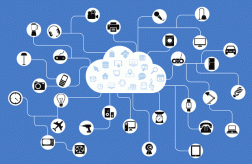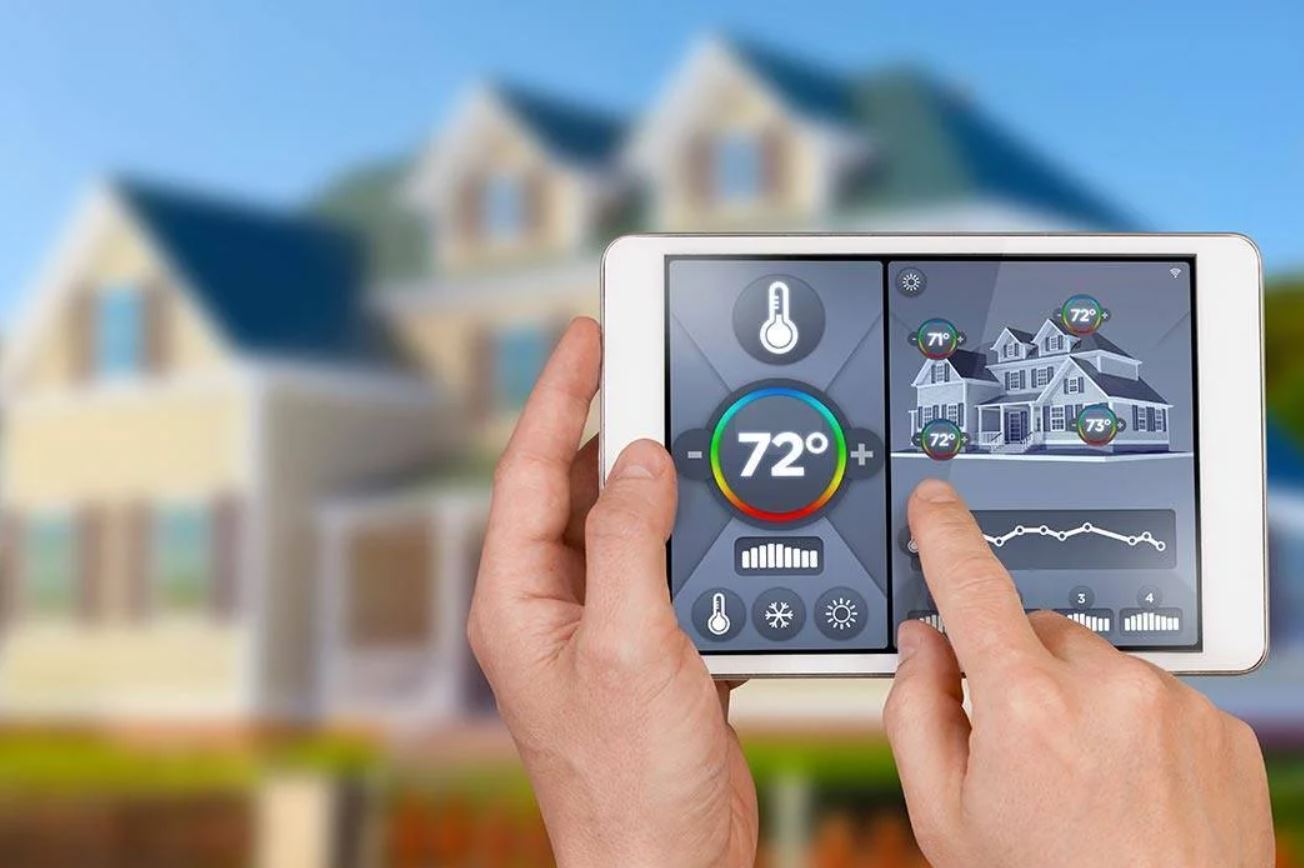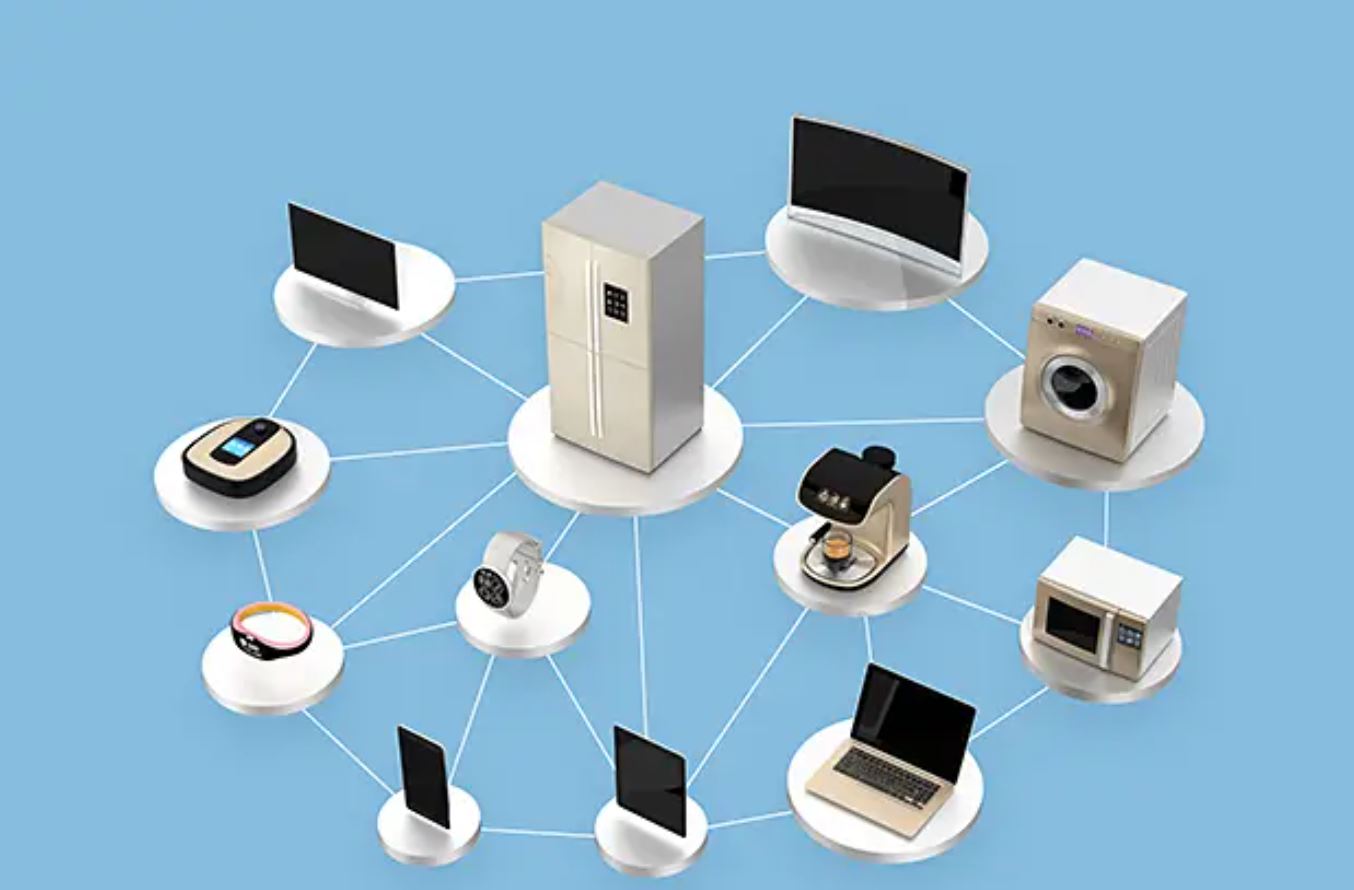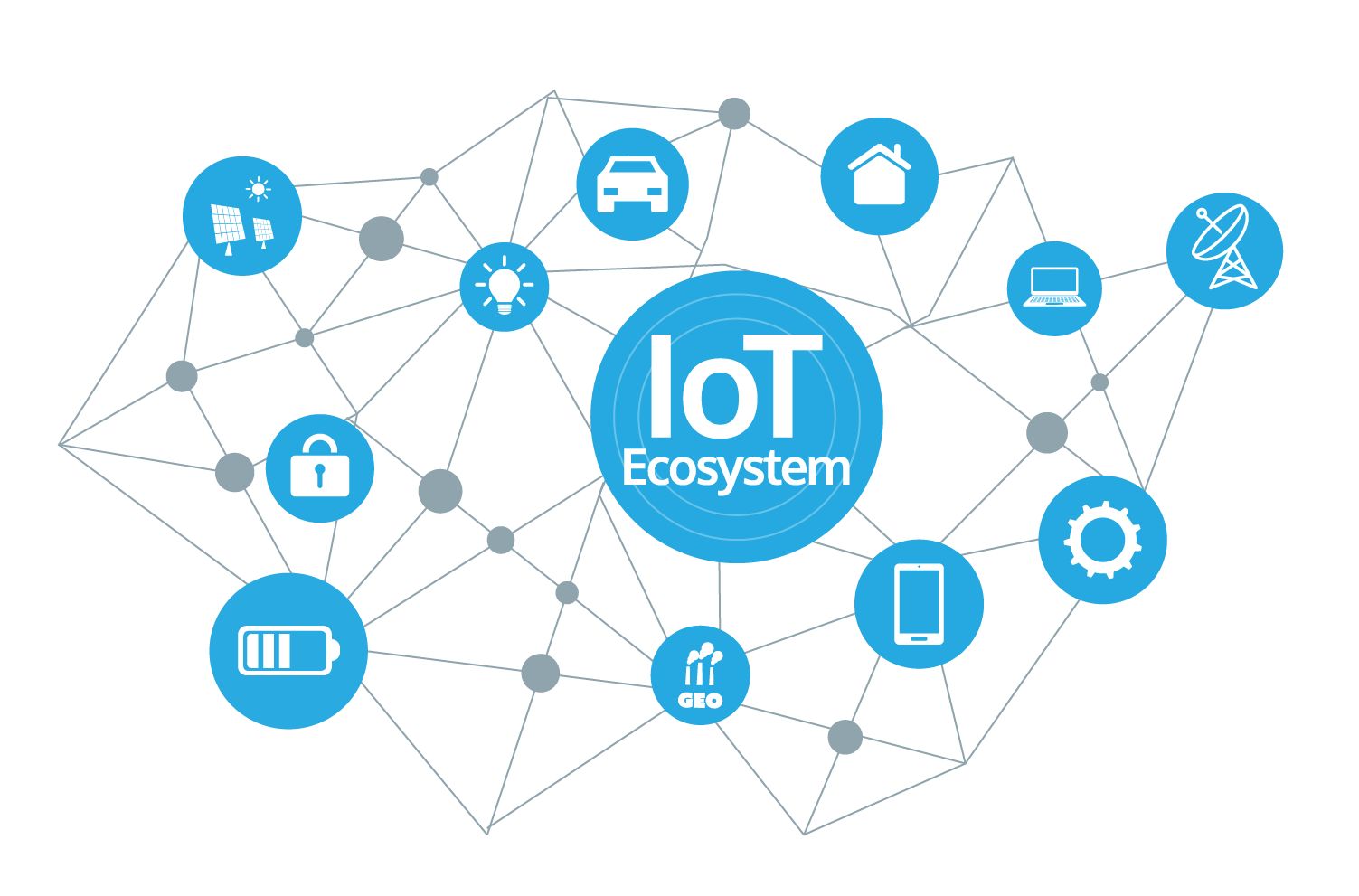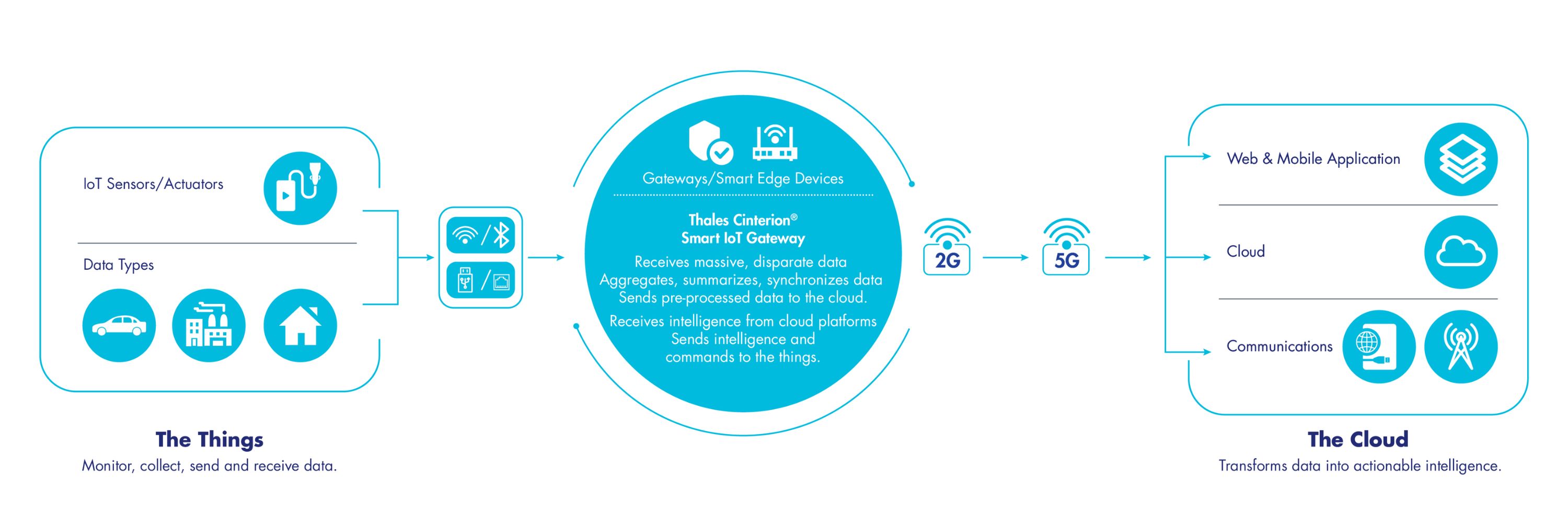Introduction
Welcome to the world of IoT, where our everyday devices are becoming smarter and more interconnected. From smart home appliances to wearable devices, the Internet of Things (IoT) has brought numerous benefits and convenience to our lives. However, with the increasing connectivity of these devices, ensuring their security has become a pressing concern.
Securing IoT devices is crucial to protect sensitive data, maintain privacy, and prevent unauthorized access. Unfortunately, many IoT devices face significant security vulnerabilities, often due to inadequate security measures implemented by vendors. As consumers, it is important to understand the risks associated with unsecured IoT devices and take the necessary steps to ensure their security.
In this article, we will explore the challenges and reasons behind the lack of security in vendor-supplied IoT devices. We will also provide you with best practices and common security features to look for when purchasing IoT devices. Furthermore, we will discuss the risks associated with unsecured devices and outline steps you can take to secure your IoT devices post-purchase.
By following these guidelines and being diligent in securing your IoT devices, you can enjoy the benefits of a connected world while mitigating potential risks.
Importance of Securing IoT Devices
Securing IoT devices goes beyond just protecting your personal information; it plays a vital role in safeguarding your digital life and maintaining the integrity of your connected ecosystem. Here’s why securing IoT devices is of paramount importance:
- Data Privacy: IoT devices gather and transmit vast amounts of data, including personal and sensitive information. Without proper security measures, this data is vulnerable to theft and misuse, putting your privacy at risk. Securing IoT devices ensures that your data remains confidential and protected from unauthorized access.
- Preventing Cyber Attacks: Unsecured IoT devices can become easy targets for cybercriminals. By compromising these devices, hackers can gain access to your network and launch various cyber attacks, such as Distributed Denial of Service (DDoS) attacks or ransomware attacks. Securing your IoT devices helps protect against these attacks and prevent potential damage to your network and online activities.
- Home Network Security: Many IoT devices are connected to your home network, which serves as the gateway to your internet-connected devices. If one IoT device is compromised, it can provide hackers with a pathway to other devices on the network, putting your entire home network at risk. Securing IoT devices ensures the overall security and integrity of your home network.
- Physical Safety: Some IoT devices, such as smart home security systems or connected cars, have a direct impact on our physical safety. If these devices are not secure, malicious individuals can exploit vulnerabilities, potentially allowing them to gain control over critical systems or access restricted areas. Securing IoT devices is essential to protect physical safety and prevent potential harm.
- Protecting Infrastructure: Beyond personal devices, IoT devices are increasingly used in critical infrastructure, such as healthcare, energy, and transportation systems. If these devices are not secured properly, they can become potential entry points for hackers to disrupt vital services and infrastructure. Securing IoT devices is crucial to protect the functioning and reliability of these critical systems.
By recognizing the importance of securing IoT devices, we can take proactive measures to mitigate the risks associated with interconnected devices and ensure a safer and more secure digital environment for everyone.
Challenges with Securing IoT Devices
Securing IoT devices poses several challenges due to the unique nature of these interconnected devices. Understanding these challenges is crucial in developing effective security measures. Let’s explore some of the challenges associated with securing IoT devices:
- Diversity and Complexity: The IoT ecosystem consists of a wide range of devices from various manufacturers, each with its own software, protocols, and security implementations. This diversity and complexity make it challenging to create standardized security measures that can address the unique vulnerabilities of each device.
- Limited Computing Resources: Many IoT devices have limited computing resources, such as low-power processors and minimal memory. This makes it difficult to implement robust security measures without compromising the device’s performance and functionality. As a result, security measures in IoT devices are often minimal or overlooked.
- Lack of Security by Design: In many cases, security is an afterthought in the development process of IoT devices. Manufacturers focus more on functionality and speed to market, neglecting the importance of built-in security features. This leaves IoT devices vulnerable to attacks and exploits.
- Long Device Lifecycles: IoT devices often have long lifecycles compared to traditional devices. This means that security vulnerabilities discovered after the release of the device may remain unpatched for a significant period. Outdated firmware and lack of security updates expose these devices to ongoing risks.
- Consumer Awareness and Knowledge: Many consumers are unaware of the potential security risks associated with IoT devices. Lack of knowledge about proper security practices, such as changing default passwords, updating firmware, or configuring network settings, leaves these devices vulnerable to attacks.
These challenges highlight the need for collaborative efforts between manufacturers, regulators, and consumers to address the security concerns associated with IoT devices. By understanding the challenges and working together, we can develop robust security measures that ensure the integrity, privacy, and safety of our IoT-enabled world.
Reasons Behind Lack of Security in Vendor-Supplied IoT Devices
The lack of security in vendor-supplied IoT devices is a concerning issue that poses significant risks to consumers. Several factors contribute to this lack of security. Let’s explore some of the key reasons behind it:
- Cost Constraints: Manufacturers often prioritize cost savings over implementing robust security measures. Tight profit margins and fierce competition drive them to cut corners when it comes to security. As a result, they may opt for inexpensive components or software that lack sufficient security features, leaving the devices vulnerable to attacks.
- Lack of Regulations and Standards: The IoT industry is still relatively new, and regulations and standards surrounding device security are lacking. The absence of mandatory security requirements gives manufacturers the freedom to prioritize other aspects of device development, often neglecting security considerations.
- Legacy Devices and Integration: Many IoT devices are designed to integrate with existing infrastructure and systems, including older devices that may not have been built with adequate security measures. The integration of legacy devices can introduce vulnerabilities that can be exploited by attackers, compromising the overall security of the IoT ecosystem.
- Focus on Usability and Functionality: In the competitive consumer market, manufacturers prioritize usability and functionality to attract customers. Security measures can add complexity and inconvenience to user experience. Manufacturers often prioritize ease of use and seamless functionality, which can result in compromised security.
- Inadequate Security Testing: Rushing to meet product release deadlines, manufacturers often overlook comprehensive security testing. Limited testing leaves vulnerabilities undiscovered, giving attackers an opportunity to exploit the device’s weaknesses.
- Lack of Firmware Updates: Many IoT devices receive infrequent or no firmware updates after purchase. This lack of updates means that known vulnerabilities remain unpatched, creating an open door for cybercriminals to exploit. Manufacturers should prioritize ongoing support and updates to address security vulnerabilities.
These reasons collectively contribute to the lack of security in vendor-supplied IoT devices. To address this issue, it is crucial for manufacturers to prioritize security by design, adhere to industry standards and regulations, and focus on ongoing support and updates. Additionally, consumers should stay informed about potential security risks and opt for devices from reputable vendors that prioritize security.
Best Practices to Ensure Security in Vendor-Supplied IoT Devices
Securing vendor-supplied IoT devices is crucial to protect your privacy, data, and network from potential threats. By following best practices, you can enhance the security of your IoT devices. Here are some key practices to consider:
- Research and Choose Reputable Vendors: Before purchasing an IoT device, research the vendor’s reputation for security. Check if the vendor has a history of releasing timely security updates and if they follow industry best practices. Opting for established and trusted vendors can improve the security of the device.
- Check Security Features: Look for IoT devices that offer robust security features out of the box. These may include encrypted communication protocols, strong authentication methods, and automatic firmware updates. Devices with built-in security features provide an added layer of protection against potential threats.
- Create Strong and Unique Passwords: Change the default passwords on your IoT devices to strong, unique passwords. Avoid using common passwords or reusing passwords across multiple devices. Strong passwords help prevent unauthorized access to your devices and data.
- Regularly Update Firmware: Stay up to date with the latest firmware releases from the device manufacturer. Firmware updates often include critical security patches to address vulnerabilities. Regularly checking for and applying firmware updates is essential to keep your devices secure.
- Segment Your Network: Separate your IoT devices from your main network by creating a dedicated IoT network or VLAN. This isolation helps contain potential security breaches, preventing attackers from accessing your main devices or sensitive data if one IoT device is compromised.
- Disable Unused Features: Review the features and settings of your IoT devices and disable any unnecessary functions. By disabling unused features, you reduce the attack surface and minimize potential vulnerabilities.
- Monitor Network Traffic: Use network monitoring tools to keep an eye on the traffic generated by your IoT devices. Unusual or suspicious network activity could indicate a security breach. Monitoring network traffic allows you to detect and respond to potential threats in a timely manner.
- Secure Your Wi-Fi Network: Ensure that your home Wi-Fi network is properly secured with a strong password and encryption. This prevents unauthorized individuals from accessing your network, which could lead to unauthorized access to your IoT devices.
- Regularly Review Privacy Settings: Check the privacy settings of your IoT devices and adjust them according to your preferences. Limit data collection and sharing to the necessary minimum. Be cautious of devices that excessively collect personal information and consider alternatives that prioritize privacy.
By following these best practices, you can significantly improve the security of your vendor-supplied IoT devices, safeguarding your data, privacy, and overall digital well-being.
Common Security Features in Vendor-Secured IoT Devices
When purchasing IoT devices, it is important to look for certain security features that indicate the device has been designed with security in mind. Here are some common security features to consider when selecting vendor-secured IoT devices:
- Secure Communication: The device should support secure communication protocols, such as Transport Layer Security (TLS) or Secure Shell (SSH). These protocols encrypt data transmission between the device and other endpoints, ensuring the privacy and integrity of the information exchanged.
- Strong Authentication: Vendor-secured IoT devices often provide strong authentication mechanisms to prevent unauthorized access. This can include features like two-factor authentication, biometric authentication, or digital certificates. Strong authentication adds an extra layer of security and prevents unauthorized users from gaining control of the device.
- Regular Firmware Updates: Look for devices with a track record of regular firmware updates from the vendor. Firmware updates often include security patches that address known vulnerabilities. Regular updates ensure that your device stays protected against emerging threats and exploits.
- Default Password Customization: It is essential to select IoT devices that allow you to set unique and strong passwords during the initial setup. Avoid devices with generic default passwords that are common across all units, as these can be easily guessed or exploited.
- Encrypted Storage of Data: Ensure that the device incorporates encrypted storage of sensitive data, such as user credentials or personal information. Encrypted storage adds an additional layer of protection, making it harder for attackers to access and misuse the stored data, even if they gain physical access to the device.
- Automatic Security Patching: Some vendor-secured IoT devices have the capability to automatically install security patches and updates. This feature ensures that your device remains up to date with the latest security fixes, reducing the risk of exploits due to unpatched vulnerabilities.
- Secure Configuration and Management Interfaces: The device should provide secure configuration interfaces, such as HTTPS, for accessing and managing the device settings. This protects against potential eavesdropping and tampering during the device setup and configuration process.
- Vulnerability Assessment and Penetration Testing: Vendors that prioritize security often conduct regular vulnerability assessments and penetration testing on their IoT devices. This proactive approach helps identify and mitigate potential vulnerabilities before they are exploited.
- Privacy Controls and Data Minimization: Look for devices that offer privacy controls and allow you to customize data collection and sharing settings. Devices that prioritize data minimization by collecting only essential information reduce the potential risks associated with data breaches.
- Security Certifications: Check if the device has obtained any industry-standard security certifications, such as the Common Criteria or the FIPS compliance certification. These certifications indicate that the device has undergone rigorous testing and meets established security standards.
While these security features are not exhaustive, they provide a good starting point when evaluating the security of vendor-secured IoT devices. Remember to thoroughly research and compare devices to find those that align with your security requirements and prioritize the protection of your data and privacy.
Risks Associated with Unsecured IoT Devices
Unsecured IoT devices pose significant risks to individuals, businesses, and overall cybersecurity. Failing to implement proper security measures can leave these devices vulnerable to various threats. Here are some of the risks associated with unsecured IoT devices:
- Data Breaches: Unsecured IoT devices can be an attractive target for hackers looking to access sensitive data. Breaches can result in personal, financial, or confidential information being exposed, leading to identity theft, financial loss, or reputational damage.
- Unauthorized Access and Control: Hackers can exploit security vulnerabilities in unsecured IoT devices to gain unauthorized access and control over the device. This can lead to unauthorized changes in settings, unauthorized data access, or even the hijacking of devices for nefarious purposes.
- Botnet Attacks: Unsecured IoT devices are often targeted by hackers to build large botnets, which are networks of compromised devices used to launch coordinated attacks. These attacks can include Distributed Denial of Service (DDoS) attacks, where the botnet floods a target with overwhelming traffic, disrupting services and causing significant downtime.
- Malware Infections: Unsecured IoT devices can become breeding grounds for malware infections. Once compromised, devices can unknowingly execute malicious code, spreading malware to other connected devices or networks, leading to further security breaches and compromises.
- Privacy Invasion: Unsecured IoT devices may unintentionally collect personal data without consent or transmit information insecurely. This invasion of privacy can lead to sensitive information being exposed, shared with unauthorized parties, or used for targeted advertising or other malicious purposes.
- Compromising Network Security: If one IoT device on a network is compromised, it can serve as a launchpad for attacks against other devices connected to the same network. This can result in the compromise of sensitive information, interruption of critical services, or unauthorized access to other devices.
- Physical Safety Risks: Certain IoT devices, such as connected home security systems or smart healthcare devices, have a direct impact on physical safety. Unsecured devices can be vulnerable to attacks that compromise their functionality, potentially leading to physical harm or endangerment.
- Loss of Service Availability: Attacks on unsecured IoT devices can disrupt the availability of online services and connected devices. This can cause inconvenience, financial losses, and, in critical scenarios, impact industries such as healthcare, transportation, or energy, where reliable connectivity and device functionality are essential.
These risks emphasize the importance of securing IoT devices to protect both individuals and the larger digital ecosystem. By understanding these risks, individuals and organizations can take proactive steps to enhance the security of their IoT devices and minimize the potential for cyber threats and attacks.
Steps to Secure IoT Devices Post-Purchase
Securing IoT devices goes beyond the initial purchase; it requires ongoing vigilance and proactive measures to protect against evolving threats. Here are some steps you can take to secure your IoT devices after purchasing them:
- Change Default Passwords: Immediately change the default passwords on your IoT devices. Using strong, unique passwords helps protect against unauthorized access. Avoid using easily guessable passwords or reusing passwords across multiple devices.
- Keep Firmware Up to Date: Regularly check for firmware updates provided by the device manufacturer. These updates often include security patches that address known vulnerabilities. Keep your devices up to date with the latest firmware to ensure optimal security.
- Disable Unused Features: Review the features and settings of your IoT devices and disable any unnecessary functions. Unused features can potentially introduce security vulnerabilities. By disabling them, you reduce the attack surface and minimize potential risks.
- Secure Your Network: Secure your home or office network by using strong encryption and an updated Wi-Fi password. Enable network encryption (such as WPA2 or WPA3) to protect against unauthorized access and encrypt data transmitted over the network.
- Segment Your Network: Create a separate network or VLAN specifically for your IoT devices. Segmenting your network ensures that even if one device is compromised, the rest of your devices and personal data remain secure. This helps to contain potential threats and prevent lateral movement within your network.
- Implement Network Monitoring: Utilize network monitoring tools to detect any unusual or suspicious network activity from your IoT devices. Monitoring helps identify potential security breaches or unusual traffic patterns, allowing for prompt mitigation and investigation.
- Disable Universal Plug and Play (UPnP): Disable UPnP on your router to reduce the risk of unauthorized access to your IoT devices through open ports. UPnP can expose vulnerabilities in devices and potentially allow unauthorized control or access.
- Secure Physical Access: Ensure physical access to your IoT devices is limited to authorized individuals. Keep devices in a secure location and prevent unauthorized individuals from tampering with or physically compromising the devices.
- Regularly Review Privacy Settings: Check the privacy settings of your IoT devices and adjust them according to your preferences. Limit data collection and sharing to the necessary minimum. Be cautious of devices that excessively collect personal information and consider alternatives that prioritize privacy.
- Follow Security Best Practices: Stay informed about the latest security best practices for IoT devices. This includes practices like disabling remote access when not needed, regularly reviewing and revoking device permissions, and being cautious about connecting to public Wi-Fi networks that may pose security risks.
Implementing these steps after purchasing your IoT devices helps bolster their security and safeguards your data, privacy, and overall digital ecosystem. By staying proactive, you can minimize the risks and enjoy the benefits of your interconnected devices with peace of mind.
Conclusion
Securing IoT devices is of utmost importance in today’s interconnected world. The risks associated with unsecured IoT devices can have severe consequences, ranging from data breaches and privacy invasion to physical safety risks and network compromises. However, by understanding the challenges, recognizing the importance of security, and following best practices, we can minimize these risks and ensure a safer digital environment.
When purchasing IoT devices, it is crucial to choose reputable vendors that prioritize security. Look for devices with strong security features, such as secure communication protocols, strong authentication mechanisms, and regular firmware updates. Changing default passwords, securing your network, and disabling unused features are essential steps to enhance the security of your devices.
Post-purchase, it is vital to keep the firmware on your devices up to date. Regularly review privacy settings and follow security best practices, such as network monitoring and physical access control. Segmenting your network and utilizing monitoring tools can help contain potential breaches and detect unusual activity.
Remember, securing IoT devices is an ongoing process. Stay informed about the latest threats and security practices, and continue to be diligent in protecting your devices and network. Collaboration between manufacturers, regulators, and consumers is essential to improve the overall security of IoT devices and protect against evolving threats.
By taking proactive measures to secure IoT devices, we can fully enjoy the benefits of a connected world while minimizing the risks. Let’s prioritize security and create a safer future for our digital lives.











